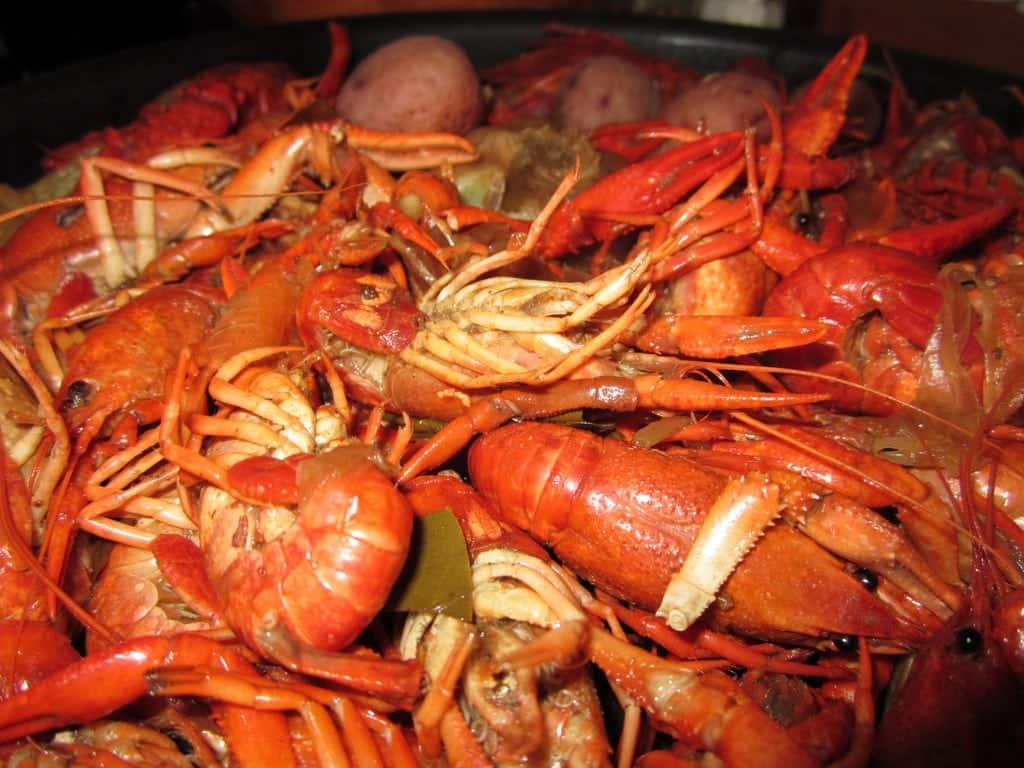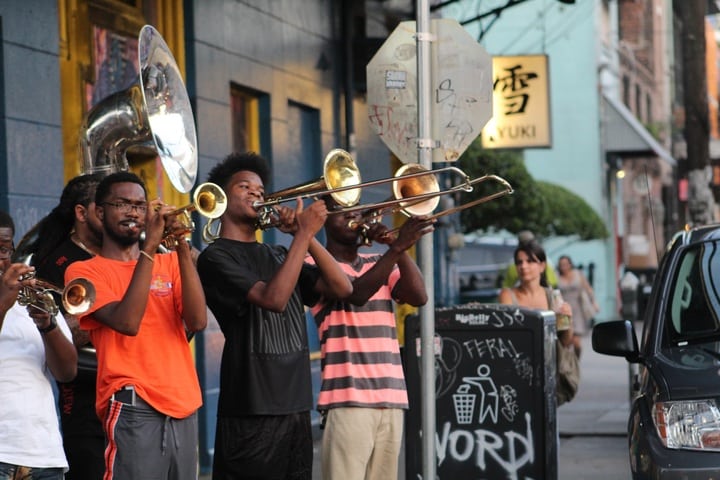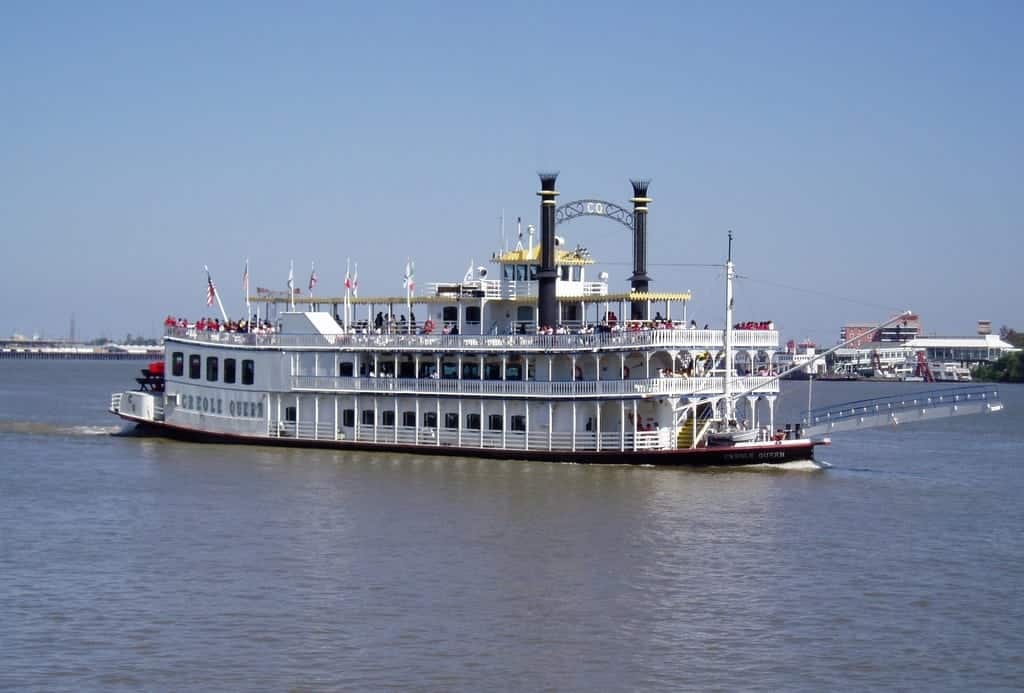Boating in New Orleans

By Troy Gilbert
Fill all your senses while boating in New Orleans.
“Off the beaten path” means different things to different people. For the cruiser tooling down the ICW or in the deep waters of the Gulf of Mexico, New Orleans, Louisiana, easily lives up to its reputation as the “northernmost Caribbean town.” It’s also surprisingly accessible to go boating in New Orleans.
The city offers respite, adventure, and full-service marinas, and bangs out a welcome to boaters like a long traveling note from a trumpet reverberating off the pressed tin ceilings in some dark, candlelit jazz club. Here, boaters are welcome.

City of Tastes and Sounds
At first glance, New Orleans is an inland city surrounded by towns of fishermen and charter captains plying the most productive estuaries and marshes in North America. The reality is quite different. The large 633-square-mile Lake Pontchartrain that forms the city’s northern border isn’t really a lake at all but more of a brackish tidal basin fully accessible from the ICW and directly from the Gulf of Mexico and the Mississippi Sound. New Orleans is a natural harbor and destination for cruisers boating in New Orleans.
There’s a running joke by locals and natives of how every visitor’s story of traveling to New Orleans can be concisely summed up with some version of these words in no particular order, “Gumbo. Gumbo. Mardi Gras. Gumbo. Étouffée. Bourbon Street. Gumbo.”
Perhaps that’s why most travelogues recommend making friends with a local over a beer and po’boy, which is solid advice, but cruisers and salty wanderers to New Orleans never have this problem, for the city’s marina district of West End is awash in the real deal.
A city of neighborhoods that hold their own distinct accents, one of the oldest is the West End. Built on reclaimed land from the lake in the 1830s, New Orleans’ West End is one of the most historical recreational and commercial boating districts in North America. The area comprises two public marinas, expansive parks, boathouses, and yacht clubs hosting nearly 1,000 slips for vessels capable of handling a nearly uniform depth of 12 feet in the lake.
West End is an easy shot from the deepwater Rigolets Pass for transient cruisers.
Home to Southern Yacht Club—the second oldest yacht club in the western hemisphere—as well as the legacies of Jimmy Buffet hanging at pier parties in the 1970s and mercenary plots to conquer Caribbean island nations in the 1980s, New Orleans’ West End still holds its romanticism and connection to the past. The city’s largest marina, Municipal Harbor, is currently undergoing a massive $22 million reconstruction.
Along her quay, the city’s first-ever community sailing center is rising and will be home to Tulane, Loyola, and the University of New Orleans sailing teams as well as a bustling headquarters for multiple high school sailing teams all ready to add their sails to this legacy. On any given day, the National World War II Museum's fully restored PT-305 can be seen slicing just off and along the seawalls and giving museum-goers a much more tactile experience and connection to that period of history.

Historic Haunts
The neighboring marina in Bucktown is home port for a fleet of shrimpers and crabbers. The proximity allows West End to host a legendary array of seafood restaurants, including the 140-year-old Bruning’s that was among those lost to Hurricane Katrina in 2005. Today, the seafood restaurants have returned to the marinas, and the raft-ups at their docks have again become a standard scene filled with the city’s characters and liveaboards holding court at the bars.
The French Quarter’s legendary Felix's Oyster Bar recently expanded to the lakefront and offers unparalleled views with your cold adult beverage and a salty dozen right off the boat. Sala serves a cool wine bar and small plate vibe mere steps from Orleans Marina. For the consummate New Orleans experience, simply grab a snowball. That’s a cup full of finely shaved ice laced with sweet syrup offered in a variety of flavors.
Add a few pounds of boiled crawfish, and take in the views from the miles of seawall lining the lake filled with picnickers, rollerbladers, and joggers.
Surrounded by million-dollar condominiums and a resurgent middle-class neighborhood, West End is infinitely walkable. Get to groceries, coffee shops, sail lofts, haul-outs, and ship’s chandleries, all of which call the lakeshore home. Further east on the Industrial Canal are more full-service boatyards and the Pontchartrain Landing. That’s a unique marina, villa and RV park that’s evolved into a gated resort.
However, New Orleans is primarily known for the French Quarter with its seemingly unending array of bars and fine dining. The West End is a quick $15 Uber away or even cheaper bus fare. However, New Orleans is so much more than the French Quarter. Tourists rarely visit some of the best areas and neighborhoods.
Ride the streetcars down St. Charles Avenue and marvel at the miles of mansions built when the city was the wealthiest in the nation. Stroll Magazine Street for its endless boutique shopping and quaint eateries housed in 19th-century shotguns and sidehall cottages.
Additionally, the city is gentrifying rapidly. There are too many restored historic neighborhoods to stroll or bike during a long weekend. Not long ago Marigny, Bywater, and Mid-City were dilapidated neighborhoods. Now, they’re teeming with young transplants renovating homes built more than a century and a half ago. New Orleans has been quietly booming and the national media is finally catching on.

Boating in New Orleans
At its heart, though, New Orleans is a maritime city. Home to one of the busiest ports in the nation, massive cranes serving freighters and container ships seem to hover above these historic neighborhoods along the Mississippi River. Innumerable charter captains also call this area home in between their commutes down to Venice and Hopedale where they make a living running sportsmen out by the offshore oil rigs.
For recreational boaters, West End is the epicenter and cruisers will feel right at home. On any given day, Olympic sailors can be found hobnobbing with sailmakers over local rums at the yacht clubs. Or over coffee, one can eavesdrop on an America’s Cup sailor’s tale to local U.S. Coast Guard men and women.
New Orleans is defined and shaped by water, as have the generations who have called her home. Cruisers in search of their next off-the-beaten port should pull out their charts and pencil future NOLA memories into their logbooks.